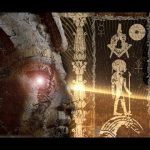Sunken Ancient Egyptian City Discovered Sunken Egyptian Nephilim City Discovered
Sunken Ancient Egyptian City Discovered Sunken Egyptian Nephilim City Discovered A city once believed to be a myth, engulfed by the Mediterranean Sea and buried far beneath the depths for more than 1,200 years—now uncovered by archeologists who have discovered the ancient mysteries of Heracleion, uncovering well-preserved artifacts that tell an amazing story.
I personally believe it could be another Nephilim city that has been discovered. The ancient Egyptians are also known for very large structures, such as Pyramids, in which they had to have required some type of superior technology to build, giants, or both.
As you can clearly see in some of the photos, the statue (s) definitely have the elongated heads, as do the Nephilim skulls.
The finds include 64 ships, 16-foot-tall statues, 700 anchors and countless gold coins and smaller artifacts.
Another interesting note is that Flinders Petrie, considered the father of modern day archaeology, claims to have found a new giant race in Egypt. In his last report he states: A new race has been found, which had not any object of manufacture like the Egyptians; their pottery, their statuettes, their beads, their mode of burial are all unlike any other in Egypt, and not a single usual Egyptian scarab, or hieroglyph of carving, or amulet, or bead, or vase has been found in the whole of the remains in question. That we are dealing with something entirely different from any age of Egyptian civilization yet known, is therefore certain. That this was not a merely local variety is almost certain, as these strange remains are found over more than a hundred miles of country, from Abydos to Gebelen. Our own work was near the middle of this district, between Ballas and Negada. The race was very tall and powerful, with strong features: a hooked nose, long pointed beard, and brown wavy hair, are shown by their carvings and bodily remains. There was no trace of the Negro type apparent, and in general they seem closely akin to the allied races of the Libyans and Amorites. Their burials are always with the body contracted, and not mummified. Metal and flint were both in use by these people. Copper adzes show that the wood was wrought, and finely carved bulls’ legs to a couch illustrates the work. Copper harpoons were imitated from the form in bone. Copper needles indicates the use of sewn garments and the multitude of spinning-wheels in the town proves how common weaving must have been.
Leave A Reply
You must be logged in to post a comment.









 Paranormal
Paranormal

